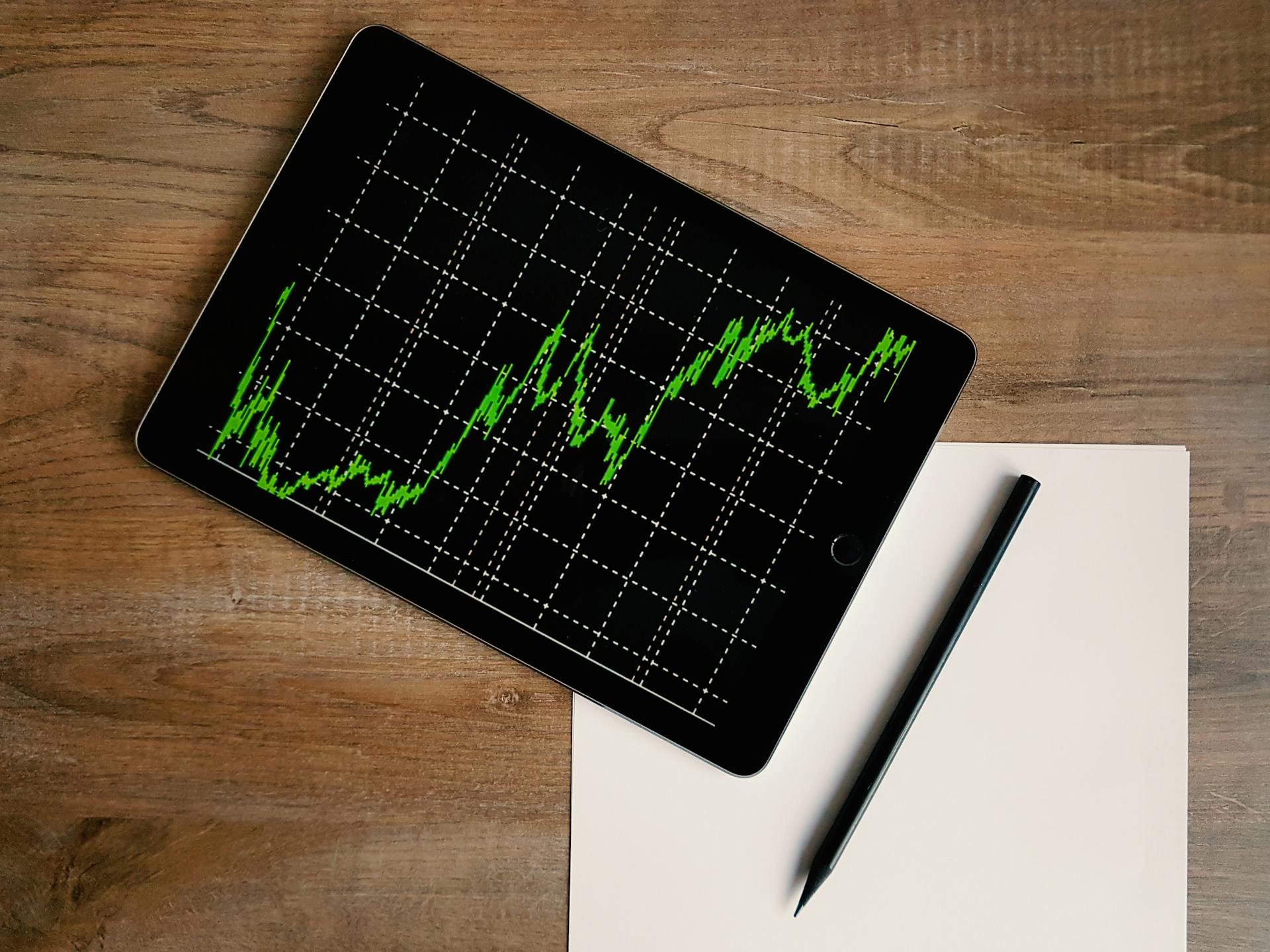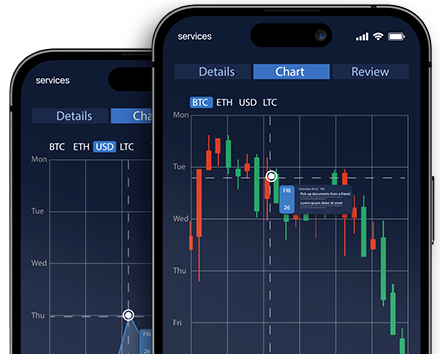Economic Calendar for Market-Savvy Investors
- An economic calendar would be a must-have tool among the basics that a smart investor would use, providing real-time information about exactly what is transpiring in the economic world about which something important might be moving the financial markets for January 21, 2025. Indicators include the unemployment rate in Great Britain at an expected 4.3%, and Canada is expected to hit an inflation rate of 1.9%.
- These are critical points of data as they reflect health in economies, which can often lead to some enormous market movement. These scheduled releases serve as a major basis for traders to strategize their trades and make the appropriate portfolio adjustments. With about 70% of traders using an economic calendar, knowing these indicators is essential to making the best investment decisions during times of volatility in the markets.


Understanding the Economic Calendar
- An economic calendar is one of the essential tools that can be used by a trader and an investor for forecasting and getting aware of major events that could change the market, showing them significant data releases scheduled over a specific period. Reports vary from employment figures to inflation rates, as well as announcements made by the central bank. This categorization makes the tool important because events can be placed according to frequency – weekly, monthly, or quarterly.
- On the economic calendar for 21st January 2025, several releases are the most important among those such as Great Britain’s Unemployment Rate, the Inflation Rate in Canada and so forth can cause considerable jumps in markets, so knowing their time enables better planning on these events; often, markets do react reasonably and predictably with certain kinds of data release.
- The calendar can also be filtered by country, importance, or asset class to help an investor focus only on the most relevant information. A trader should stay informed of what is taking place so that decisions are made promptly and risks managed appropriately. To understand how to use an economic calendar is critical to anyone trying to navigate through financial markets effectively.
How to Use the Economic Calendar for Trading
Step 1: Identify key events
Concentrate on high-impact economic indicators, including employment reports, inflation rates, and announcement of the central bank. Also be aware of specific events such as the Unemployment Rate in Great Britain or Canada’s Inflation Rate which tend to drive markets.
Step 4: Engage in pre-data trading
Anticipate and position yourself in the market for expected reactions by analyzing anticipated events. For example, if you anticipate a central bank will hike the rates, you will make trades aligned with your expectations and get a jump before the central bank does it.
Step 7: Stay updated
Keep checking the economic calendar for changes and updates, and accordingly, update your trading plan to stay in-line with the conditions prevailing in the market.
Step 2: Plan ahead
You can plan your trades using the calendar and, therefore, predict significant market movements. You would be able to adjust your positions before the release of data because you planned around the events.
Step 5: Implement risk management
Engaging in strict measures of risk management, including entering stop-loss orders, can ward off sudden spurts in unexpected price fluctuations upon the release of the economic data.
Step 3: Develop trading strategies
Further, to develop strategies based on anticipated volatility of economic releases. Techniques such as scalping work best because it gives the trader a chance to ride on minute movements in prices resulting from a particular announcement.
Step 6: Learn from historical data
Study past situations of economic release and how this affects the market to make suitable adjustments to refine your trading styles over time as you find that patterns and trends can improve how your processes make decisions during future market condition changes.
Benefits of Using an Economic Calendar
Risk management:
This helps traders identify high-impact events, which can be used to predict volatility spikes and adjust trading strategies to avoid significant losses.
Trade planning:
The traders can schedule their entries and exits around important economic events, so they are active in the market when opportunities are most favourable.
Avoiding surprises:
An economic calendar helps traders determine the fluctuations that may occur regarding prices, avoiding sudden and not-so-favourable market movements that may disturb their portfolios.
World view:
These calendars include the world's economic events that ensure diversification of the traders' portfolios and the exploitation of opportunities in other currency pairs.
Better trading ideas:
With access to economic event data, analysts may formulate complex trading strategies, which increases profitability and enhances the comprehension of the market in general.
Historical background:
Economic calendars usually provide historical data, so traders can examine how the market reacted to such events in the past and, hence, improve their trading strategies.
Filter options:
Most economic calendars have filters which can filter out events by country or importance to make it easy to focus on the information that will impact a given trade.
Key Economic Indicators to Watch in the Economic Calendar
Gross Domestic Product (GDP):
Total monetary output of a nation; the general health and growth of the country. Rise in GDP will reflect an increase in economic strength, whereas decline might be seen as recession.
Retail sales:
This indicator measures consumer spending and is a direct reflection of consumer confidence. Strong retail sales figures usually mean a healthy economy.
Consumer Price Index (CPI):
This is the index of changes in the price level of a basket of consumer goods and services. It is the primary measure of inflation. High inflation reduces purchasing power and affects monetary policy.
Interest rate decisions:
Central banks’ announcements regarding interest rates have a significant effect on borrowing costs and economic activity. Changes in rates can influence everything from consumer spending to business investment.
Unemployment rate:
The unemployment rate is actually measuring the percentage of the labour force that is unemployed and searching for work. Often, a high rate of unemployment has been viewed as an indicator of economic problems. On the other hand, low rates of unemployment are also considered to be the harbinger of economic stability.
Purchasing Managers Index (PMI):
This measures the health of the manufacturing industry. An increase in PMI above 50 indicates expansion; below 50 points to contraction.
Strategies for Trading on Economic Announcements
Pre-announcement positioning:
Traders most often look back on the trend in history and general sentiment leading into an announcement so they can then position themselves well ahead of this information release for market reaction given a similar outcome before.
Breakout trading:
There are many strategies that go for the wait in consolidation beforehand of a major announcement. Then the trader takes positions based on the direction of a breakout after the news release, this captures the rapid price movement that happens often within very short times after an announcement.
Fade the news:
This is the strategy of trading against the first market reaction to an announcement. A large price pop due to news can be sold into or bought into weakness, wagering that the initial reaction will reverse as the market's excitement fades.
Using exotic options:
Exotic options will benefit those trading on news looking to mitigate the risk. Their payout structures are pre-determined on whether price levels are breached and thus offer participation in volatility without directly being exposed to currency pairs.
Monitor key releases:
Staying abreast of which economic indicators are most impactful, such as interest rates, inflation, and employment figures, can help traders make informed decisions about when to enter or exit trades.
The Impact of Geopolitical Events on Economic Calendar
Market volatility:
Geopolitical tensions, such as the Russia-Ukraine conflict and Middle Eastern instability, can create sharp market fluctuations. Investors react to news regarding these events, which in turn creates immediate price movements in currencies, commodities, and equities.
Supply chain disruptions:
Conflicts and political instability are known disruptors of global supply chains. These can result in increased costs and increased delays, for example, the disruptions due to regional conflicts in the Red Sea over maritime transport.
Changing geopolitical trade relationships:
Countries are reassessing trading partners as a result of geopolitical considerations. This development will render global trade flows relatively fragmented with significant declines in trade between U.S. blocs and China. Such changes can affect aggregate forecasts and growth projections.
Policy actions:
Governments may enact policies that help boost economic resilience in the face of geopolitical risks. This can be done by diversifying supply sources and increasing domestic production of critical goods.
Investment trends:
Political-geographic factors could alter foreign direct investment flow trends as states search for alignments with stable counterparts. Such changes may have realignment effects in world economic space, thus reshaping the world economy's long-run growth prospects.
Comparing Economic Calendars from Different Countries
Comparing Economic Calendars from Different Countries
Economic calendars are highly important for following key economic indicators within different countries; they give investors an idea about the movement in the market and the investment potential. Here are some of the major economic calendars of several nations:
United States:
It is an important U.S. economic calendar since it remains the largest economy in the world. Among these indicators are interest rate decisions of the Federal Reserve, Non-Farm Payrolls, and Retail Sales. Such events influence the U.S. dollar quite heavily and thus, in turn, affect global markets.
Canada:
Canada’s calendar shows its strong economy, which is based on natural resources and the trade agreements signed. The Bank of Canada interest rate decisions and GDP reports are the most important indicators. Such metrics help assess economic health and affect the performance of the Canadian dollar.
United Kingdom:
The UK economic calendar is carefully followed for events such as the release of GDP, interest rate decisions by the Bank of England, and employment figures. Considering that London is a financial centre, these can influence many global markets.
Australia:
Australia’s calendar speaks about the country having a commodity-rich economy. Indicators such as interest rates in Australia by the Reserve Bank of Australia, and unemployment levels can have commodity prices and the Aussie Dollar as outputs of the report.
Global perspective:
Economic calendars of various countries provide a global overview of the health of economies. They are similar in structure, including event dates, previous values, forecasts, and actual results, which can be easily compared between nations.
Tools and Resources to Supplement the Economic Calendar
Tools and Resources to Supplement the Economic Calendar
- The Thaurus economic calendar is a completely developed economic calendar with important information for traders. It contains critical financial events of multiple markets, forex, stocks, and commodities, so there is helpful information for traders on major market movements and such opportunities for trading in time. The detail information given about the upcoming economic releases allows users to predict market reactions and adapt their trading strategy accordingly.
- Besides the economic calendar, there are even more ways that market analysis can add richness to a trader’s understanding of market conditions. These include tools like heatmaps, pip value calculators, and margin calculators, for example, which further illuminate price movement and volatility. Heatmaps have visually presented market performance across various instruments for really quick insight into trends. Pip value calculators help one to calculate the monetary value of price movements in forex trading, and margin calculators help one understand leverage and risk management. When using these tools together with the economic calendar, one can better evaluate their positions and make necessary adjustments based on the expected economic events.
- Through Thaurus, the users can avail the economic calendar resources provided to improve the market analysis skills. This results in more strategic and informed trading decisions for the traders. The integration of an economic calendar with analytical tools enables the user to take charge of financial market complexities with much more confidence.

Historical Economic Events and Market Reactions
The Stock Market Crash (1929):
Black Tuesday is a name given to the crash that happened on October 29, 1929, marking the start of the Great Depression. It was one day when over 16 million shares were traded in a day with devastating losses in finance. Panic selling at this point gave a tremendous downward turn to the stock prices with great economic woes sweeping across America and other places around the world.
COVID-19 Pandemic (2020):
It was characterized by unprecedented worldwide economic disruption through sharp stock market declines and recovery through stimulus. The pandemic did highlight the strong interconnectivity of the world’s economies while bringing long-run changes in behaviour and dynamics on the demand and supply side in the market.
The Great Inflation (1965-1982):
This period showed the highest inflations, running at 13.5% annually in 1980. Despite this, the Fed failed to reverse inflation and instead ended up facing multiple recessions and unpopular wage and price controls. Market reactions included greatly increased volatility for interest rates; and, following a switch on the part of investors to begin hedging versus inflation, new investment strategies emphasizing real returns.
The Great Recession (2007-2009):
The collapse of the housing bubble and subsequently the financial crisis triggered this event, which in turn led to severe contractions in global markets. Stock indices plummeted; unemployment soared, and government interventions had to be adopted to stabilize the economies of most countries. A flight to safety was seen by increased investments in gold and government bonds.
FAQ's
It is a list of important economic events and statistical releases that might impact financial markets and currency quotes.
This helps traders better predict market movement, plan their trades around significant events, and manage the risk associated with announcements.
Central bank meetings, employment reports, GDP releases, and inflation data are top influencers in the market, having significant effects on market volatility.
Economic calendars update regularly, sometimes even in real-time, as information related to the new releases of data plus upcoming scheduled events updates the current time.
They can at least give indications about possible movements of the markets on the strength of the potential upcoming economic releases.
Interest rate decisions are major events that can cause extreme market volatility and shape trading strategies in different asset classes.
Volatility tends to be highest during major economic announcements, such as central bank meetings and significant data releases, like employment reports.

Don't miss out on the great market opportunities
Join the world of trading and start building your wealth today!
Benefits of Using an Economic Calendar
Risk management:
This helps traders identify high-impact events, which can be used to predict volatility spikes and adjust trading strategies to avoid significant losses.
Trade planning:
The traders can schedule their entries and exits around important economic events, so they are active in the market when opportunities are most favourable.
Avoiding surprises:
An economic calendar helps traders determine the fluctuations that may occur regarding prices, avoiding sudden and not-so-favourable market movements that may disturb their portfolios.
World view:
These calendars include the world's economic events that ensure diversification of the traders' portfolios and the exploitation of opportunities in other currency pairs.
Better trading ideas:
With access to economic event data, analysts may formulate complex trading strategies, which increases profitability and enhances the comprehension of the market in general.
Historical background:
Economic calendars usually provide historical data, so traders can examine how the market reacted to such events in the past and, hence, improve their trading strategies.
Filter options:
Most economic calendars have filters which can filter out events by country or importance to make it easy to focus on the information that will impact a given trade.